
Moodle for Mobile Learning
¥71.93
A guide with practical examples that gives you hands-on knowledge in creating learning environments for Mobile devices using Moodle, while also empowering you to create your own effective mlearning course designs."Moodle for Mobile Learning" is primarily aimed at Moodle course practitioners – teachers, tutors, instructors, and learning and development professionals. It does not require you to have an in-depth knowledge about any mobile technologies. It is for anyone who has the desire to deliver great courses that allow their learners to interact using the devices in their pockets.
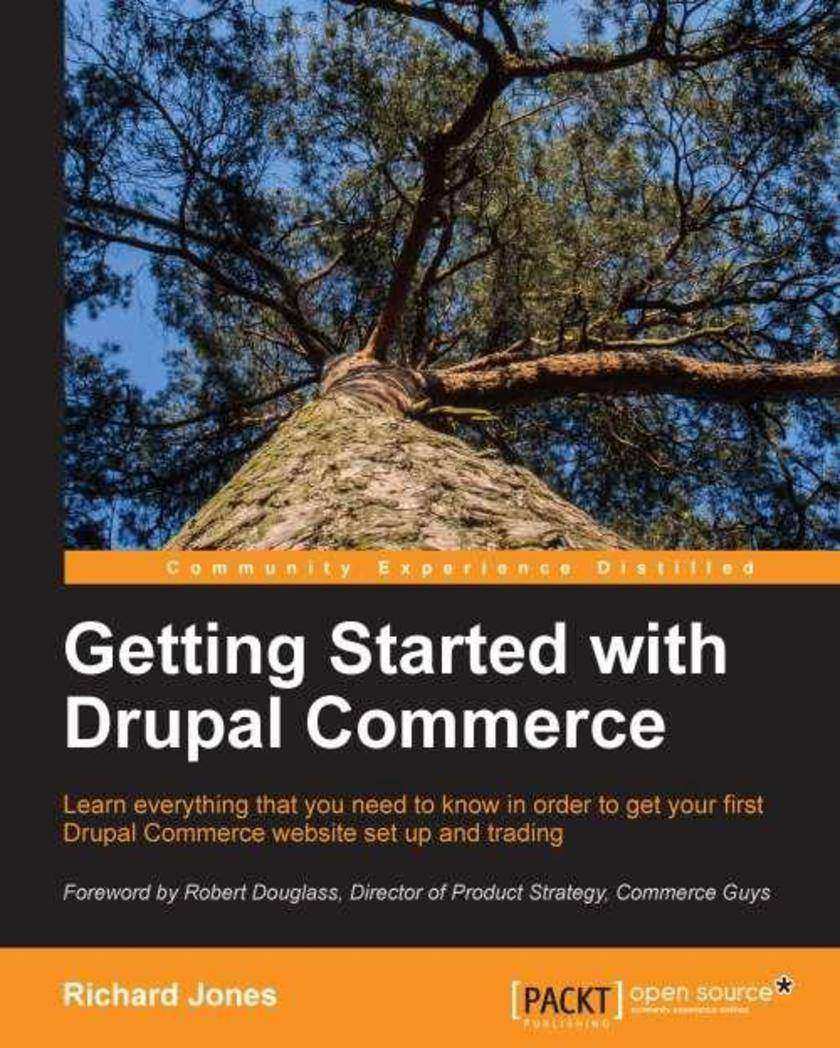
Getting Started with Drupal Commerce
¥71.93
A simple yet concise step-by-step tutorial that starts from scratch and builds up your knowledge with focused examples that will enable you to set up and run an e-commerce website.This book is for beginners and will take you through the installation and configuration of Drupal Commerce from scratch, but some familiarity with Drupal 7 will be an advantage. All examples are based on development on a local computer – you do not need a hosted Drupal environment.

Microsoft Dynamics GP 2013 Financial Management
¥71.93
A standard tutorial-based approach covering Microsoft Dynamics GP 2013 and its six financial modules. The book is intended to allow users to improve their system use and workflow by introducing new modules to assist in financial management.This book is for you if you’re a Dynamics GP partner, or Dynamics GP user, primarily focused on delivering application optimizations. This book assumes that you have a working knowledge of Microsoft Dynamics GP and have an understanding of the requirements of financial management.
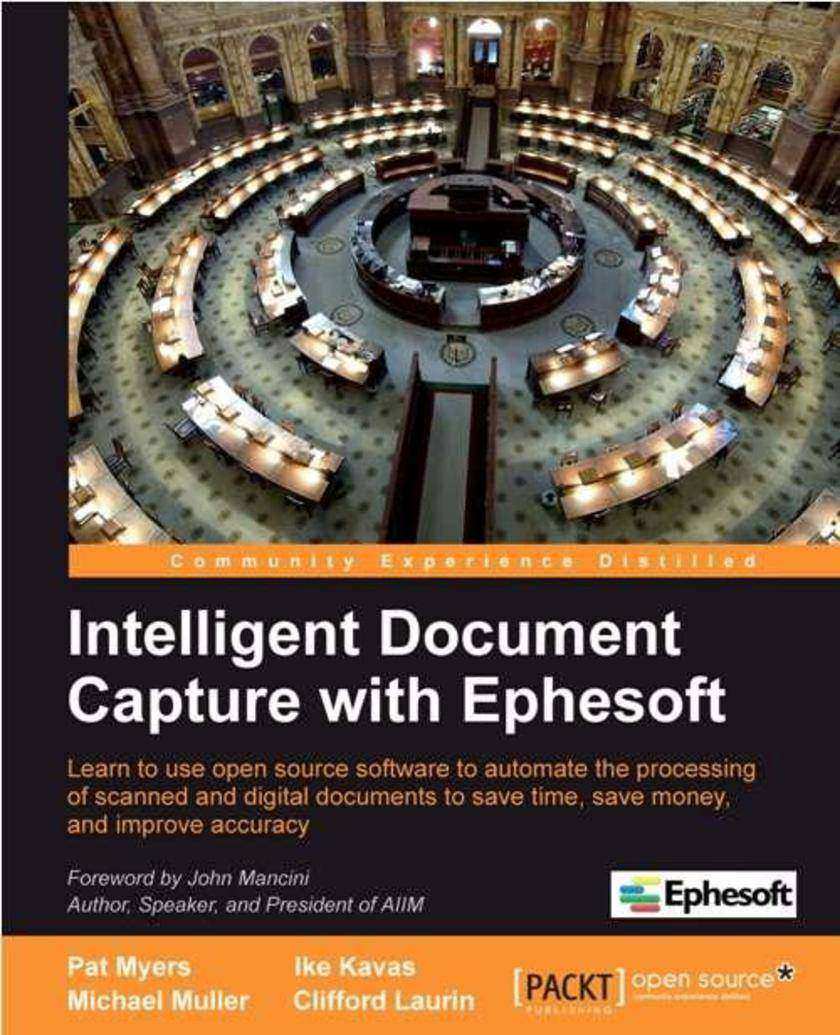
Intelligent Document Capture with Ephesoft
¥71.93
Written in easy to follow manner, this book is a complete guide to Document capture with Ephesoft,This book is intended for information technology professionals interested in installing and configuring Ephesoft for their organization, but it is a valuable resource for anyone interested in learning about document capture in general.
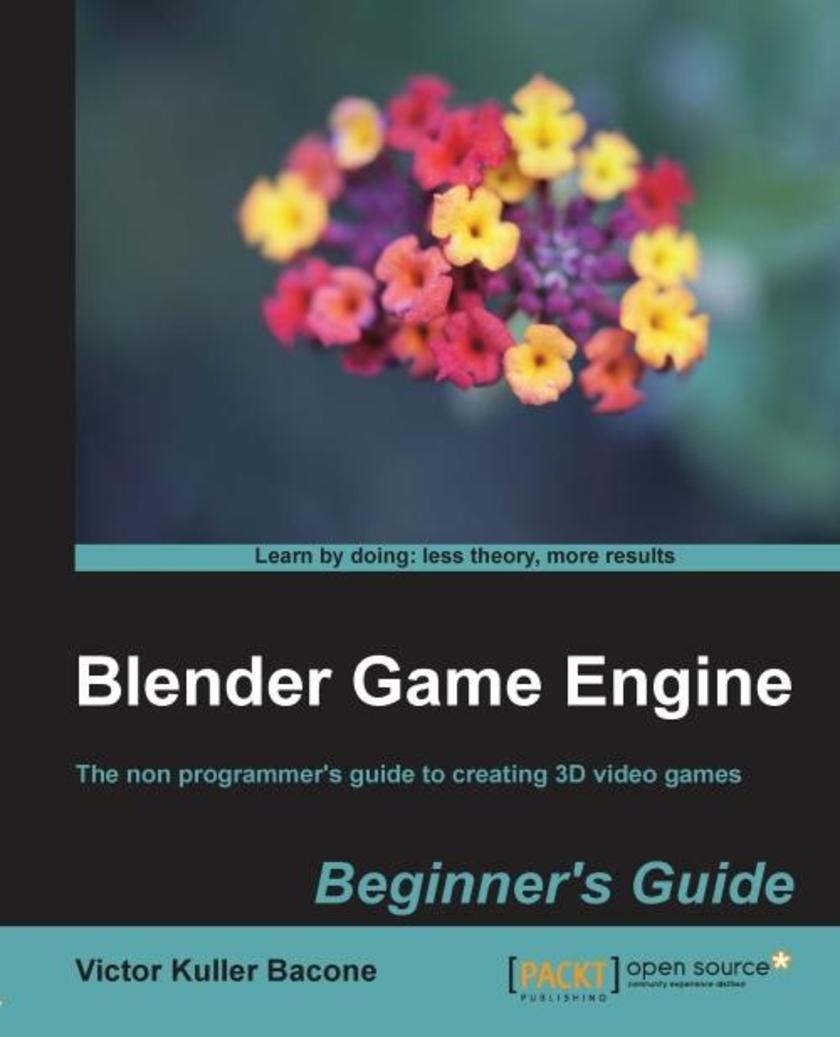
Blender Game Engine: Beginner’s Guide
¥71.93
Create a complete game step by step with no previous experience necessary. Practical tutorials take you through the entire process from beginning to end. If you have used Blender before but never got to grips with the Blender Game Engine (BGE), this book is for you. If you have tried and failed with other game development environments, or if *ing is not your strong point, this is where you should start.

Responsive Web Design with HTML5 and CSS3 - Second Edition
¥71.93
Are you writing two websites: one for mobile and one for larger displaysOr perhaps you've already implemented your first RWD but are struggling to bring it all togetherIf so, this book gives you everything you need to take your websites to the next level. Some HTML and CSS knowledge will help; everything else you need is included in the book.

Getting Started with PowerShell
¥71.93
This book is intended for Windows administrators or DevOps users who need to use PowerShell to automate tasks. Whether you know nothing about PowerShell or know just enough to get by, this guide will give you what you need to take your *ing to the next level.
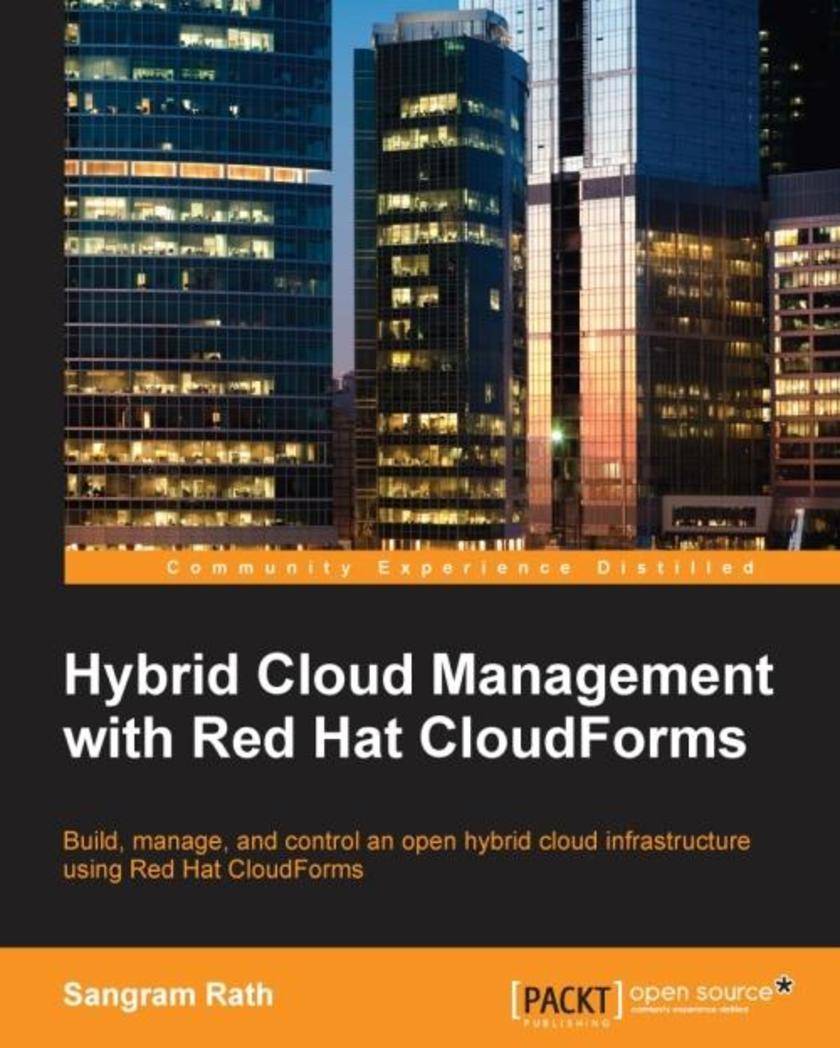
Hybrid Cloud Management with Red Hat CloudForms
¥71.93
If you are an existing Red Hat administrator who is new to the Red Hat cloud infrastructure and would like to manage and deploy hybrid clouds, then this book is for you. Red Hat Linux administration experience is assumed.
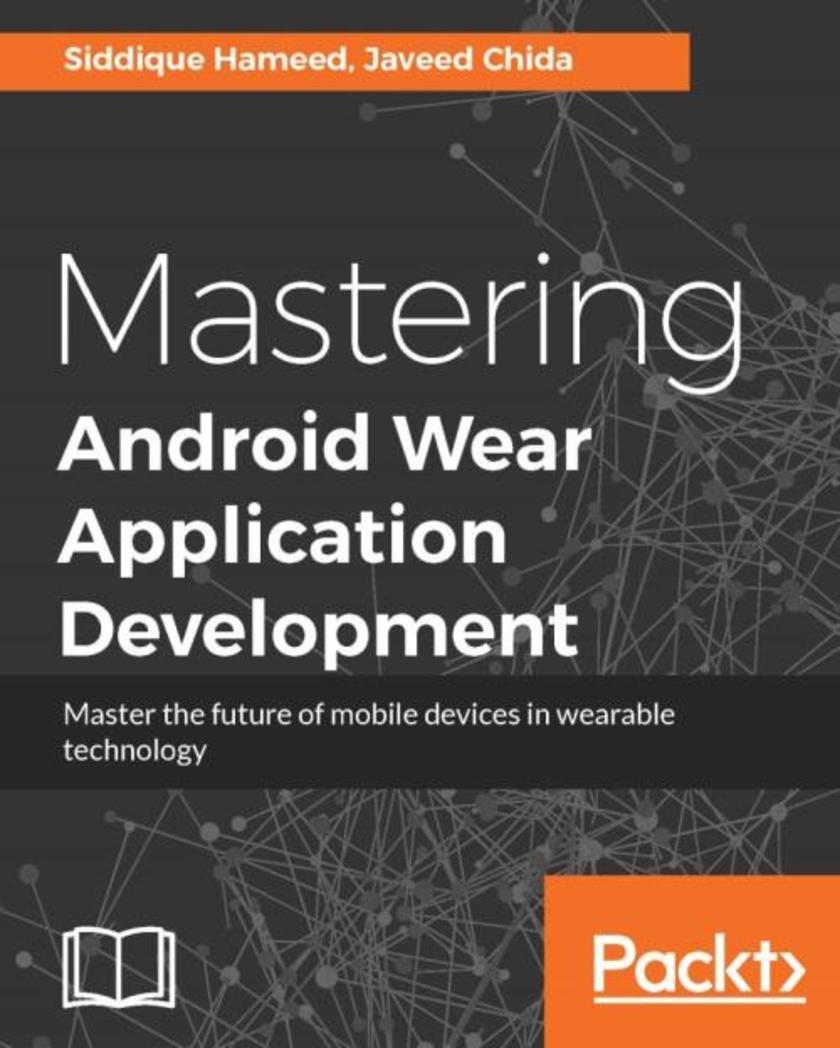
Mastering Android Wear Application Development
¥71.93
Master the future of mobile devices in wearable technology About This Book Mastering Android Wear Development is a complete guide to wearable technology for experienced Android developers Notifications, voice input, coping with round screens – all the key challenges of wearable technology are covered This book describes not just how to write code for wearables, but also how to think about wearable technology and design apps that work well with the physical limitations of wearable devices Who This Book Is For This book is for application developers (the web, mobile, and desktop) who are interested in building new wearable apps, and mobile developers who already have apps on iTunes or Google Play Store and are looking to provide Android Wear support for their existing Android or iOS apps. What You Will Learn Understand the Wearable computing technology Set up a development environment to build Android Wear apps using Android Studio Master the Android Wear SDK and APIs Understand the UI patterns and UX principles to build Android Wear apps Work with the different form factors of wearable devices (round and square) Take advantage of the sensors available on Android Wear devices Develop Android Wear sample apps Communicate between Android mobile and Android Wear apps Get to know the steps involved in publishing Android Wear apps to the Play store In Detail Wearable technology is the future of mobile devices. It looks set to be a breakthrough technology, just like the iPad was before it. With the Apple Watch being widely regarded as a success, all eyes are now on Google to provide a similar device for its users. Keep your skills ahead of the competition and be one of the first to fully understand this powerful new trend. This book will give you a very solid understanding of the philosophy, thought process, development details, and methodologies involved in building well-designed, robust Android Wear applications. We cover the advantages and disadvantages of the wearable computing paradigm and provide a good foundational knowledge for you to build practical, real-world wearable apps. You will learn about the various tools, platforms, libraries, SDKs, and technology needed to build Android Wear apps. By the end of the book, you will be an expert in building Android wearable apps. Style and approach This one-stop professional tutorial will teach you everything you need to know to begin designing and developing applications for this exciting new technology. Every step from development through testing to deployment is explained in depth.
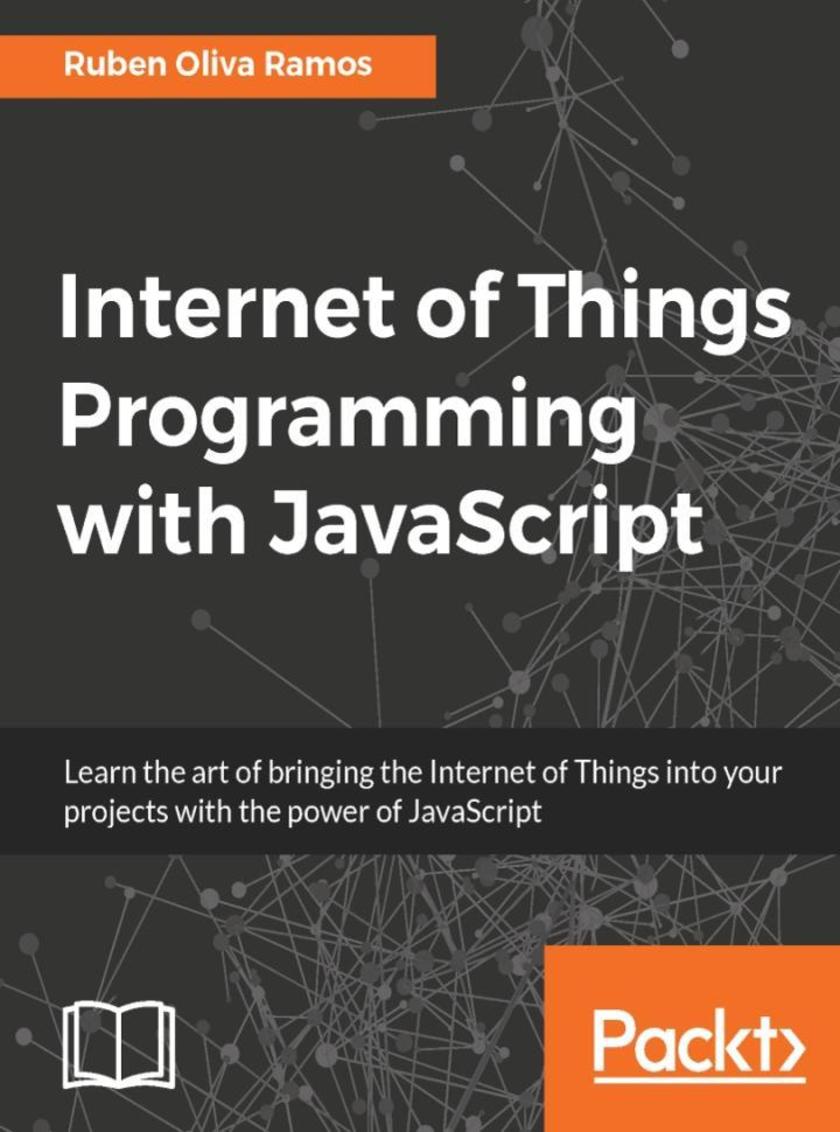
Internet of Things Programming with JavaScript
¥71.93
Learn the art of bringing the Internet of Things into your projects with the power of JavaScript About This Book This is a practical guide to help you configure and build a complete distributed IoT system from scratch using JavaScript Utilize the power of Node and HTML5 to develop web services and a centralized web server, enabling high-level communication between connected devices Control all your connected devices from the browser by setting up a common dashboard Who This Book Is For This book is for developers who are interested in learning how to communicate with connected devices in JavaScript to set up an IoT system. Some basic knowledge of JavaScript is expected. Hobbyists who want to explore the potential of IoT in JavaScript will also find this book useful. What You Will Learn Develop the skills to connected devices prepared the field to interact with the devices in a network system Internet of Things Find out how to connect sensors and actuators to the devices Send data to a web server connected devices Understand Internet of things using web services and database Configure a dashboard using HTML5 and JavaScript Control devices connected from a dashboard Monitor different devices from the dashboard Build an app for a smartphone to control different devices In Detail The Internet of Things (IoT) is an entirely new platform for developers and engineers, but one thing that remains consistent as we move into this new world, are the programming languages. JavaScript is the most widely used language over the Internet, and with IoT gaining momentum, you will learn how to harness the power of JavaScript to interact with connected devices. This book will teach you how to interact with endpoint devices by developing web services in JavaScript and also set up an interface to control all connected devices. This book begins with setting up a centralized web server that serves as a hub for all connected devices. The book then progresses further towards building web services to facilitate high-level communication between connected devices. Using Arduino and Raspberry Pi Zero as endpoint devices, the book will show you how devices can communicate with each other, perform a wide range of tasks, and also be controlled from a centralized location using JavaScript. The book ends with creating a hybrid app to control the devices that can be run from a browser or installed on a smartphone. Style and approach This book offers step-by-step guidance on how to set up a distributed IoT system using JavaScript. It will teach you how to interact with endpoint devices by developing web services in JavaScript and also set up an interface for controlling all connected devices.
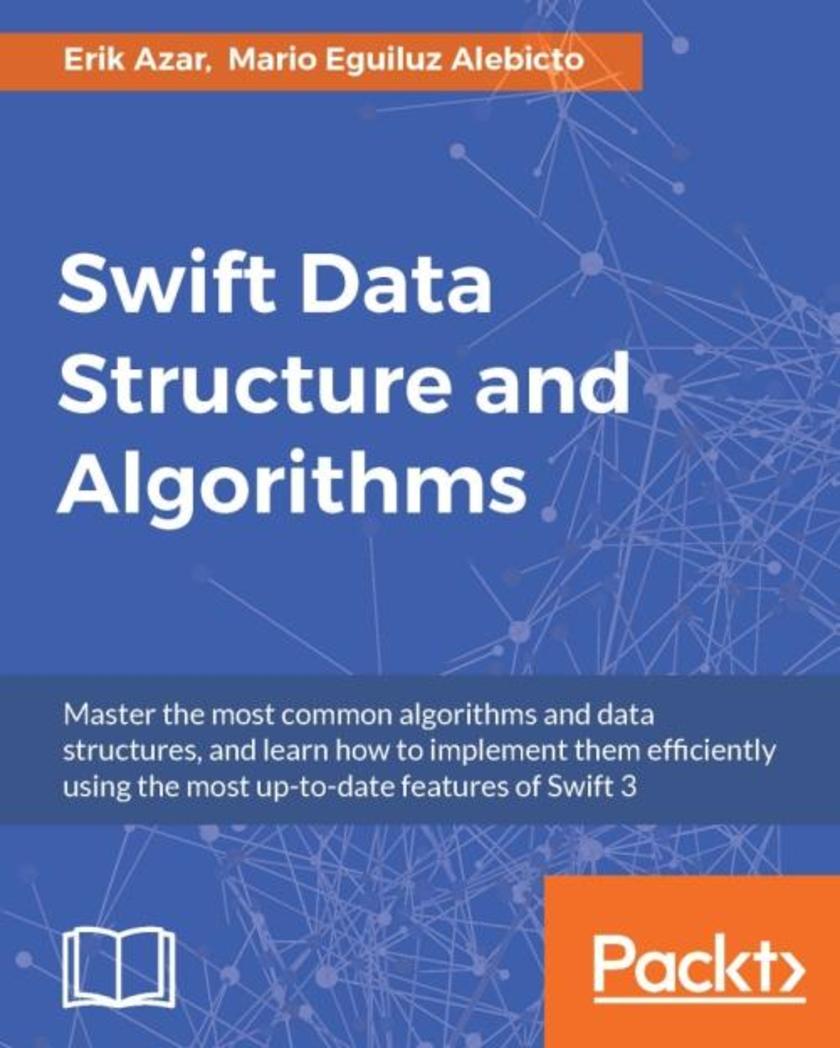
Swift Data Structure and Algorithms
¥71.93
Master the most common algorithms and data structures, and learn how to implement them efficiently using the most up-to-date features of Swift 3 About This Book Develop a deep understanding of the collections in the Swift Standard Library with this step-by-step guide Develop native Swift data structures and algorithms for use in mobile, desktop, and server-based applications Learn about performance efficiency between different data structures and algorithms Who This Book Is For This book is for developers who want to learn how to implement and use common data structures and algorithms natively in Swift. Whether you are a self-taught developer without a formal technical background or you have a degree in Computer Science, this book will provide with the knowledge you need to develop advanced data structures and algorithms in Swift using the latest language features. What You Will Learn Get to know about the basic data structures and how to use the Swift REPL Use the Swift Standard Library collections bridging to Objective-C collections, and find out about protocol-oriented programming Find out about Swift generators and sequences, and see how to use them to implement advanced data structures such as Stack, StackList, Queue, and LinkedList Implement sorting algorithms such as Insertion Sort, Merge Sort, and Quick Sort and understand the performance trade-offs between them See how to implement various binary trees, B-Tree, and Splay Trees Perform advanced searching methods using Red-Black trees, AVL trees, and Trie trees, and take a look at several substring search algorithms Get to know about the data structures used in graphs and how to implement graphs such as depth-first search, breadth-first search, directed graphs, spanning tree, and shortest path Explore algorithm efficiency and see how to measure it In Detail Apple’s Swift language has expressive features that are familiar to those working with modern functional languages, but also provides backward support for Objective-C and Apple’s legacy frameworks. These features are attracting many new developers to start creating applications for OS X and iOS using Swift. Designing an application to scale while processing large amounts of data or provide fast and efficient searching can be complex, especially running on mobile devices with limited memory and bandwidth. Learning about best practices and knowing how to select the best data structure and algorithm in Swift is crucial to the success of your application and will help ensure your application is a success. That’s what this book will teach you. Starting at the beginning, this book will cover the basic data structures and Swift types, and introduce asymptotic analysis. You’ll learn about the standard library collections and bridging between Swift and Objective-C collections. You will see how to implement advanced data structures, sort algorithms, work with trees, advanced searching methods, use graphs, and performance and algorithm efficiency. You’ll also see how to choose the perfect algorithm for your problem. Style and approach This easy-to-follow yet comprehensive guide can either be read from beginning to end, or depending on your current knowledge level, you can jump to the specific chapter that interests you. Each chapter topic starts with an introduction to the topic and algorithm before moving on to the hands-on implementation and analysis.
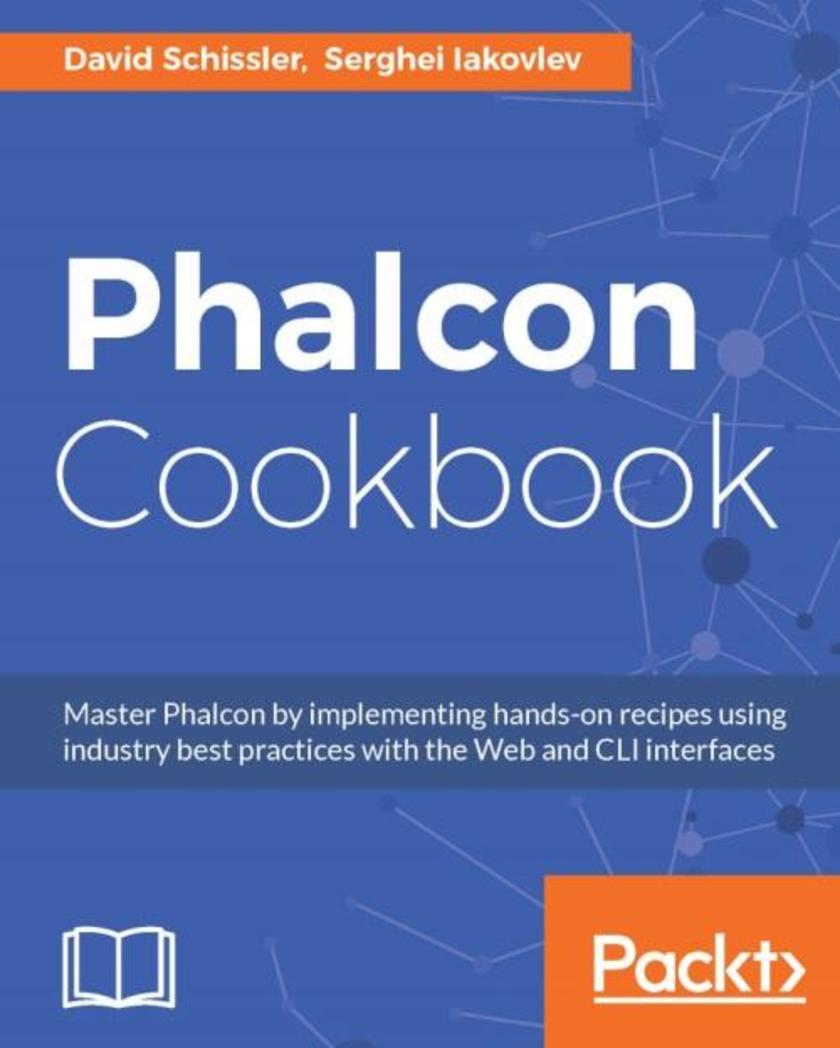
Phalcon Cookbook
¥71.93
Master Phalcon by implementing hands-on recipes using industry best practices with the Web and CLI interfaces About This Book Create quick prototypes with the Phalcon Developer Tools Learn to use the powerful and uniquely efficient Phalcon ORM Reuse codes in real projects Who This Book Is For If you are a beginner-to-intermediate Phalcon developer who wants to level up or an advanced user who is seeking some new techniques and insight, then this book is perfect for you. This book will be relevant to you over a long period of time due to the mixed nature of this book in providing both abstract comprehension as well as specific examples meant to be usable in your projects. You will be able to experiment with each new aspect of integration in prebuilt recipes meant to best illustrate each specific feature. This will save you lots of time getting up to speed before attempting to integrate into a real application. What You Will Learn Install the Phalcon extension from both premade packages and source code Create a normal and micro application structure Understand the dispatcher event cycle and create custom plugins Get hands-on using the Phalcon Query Language and ORM Create flexible views with the Volt template system Leverage Phalcon to prevent common security vulnerabilities Optimize an application with focused solutions Profile and debug an application to get increased reliability In Detail Phalcon is a high-performance PHP framework delivered as a PHP extension. This provides new opportunities for speed and application design, which until recently have been unrealized in the PHP ecosystem. Packed with simple learning exercises, technology prototypes, and real-world usable code, this book will guide you from the beginner and setup stage all the way to advanced usage. You will learn how to avoid niche pitfalls, how to use the command-line developer tools, how to integrate with new web standards, as well as how to set up and customize the MVC application structure. You will see how Phalcon can be used to quickly set up a single file web application as well as a complex multi-module application suitable for long-term projects. Some of the recipes focus on abstract concepts that are vital to get a deep comprehension of Phalcon and others are designed as a vehicle to deliver real-world usable classes and code snippets to solve advanced problems. You’ll start out with basic setup and application structure and then move onto the Phalcon MVC and routing implementation, the power of the ORM and Phalcon Query Language, and Phalcon’s own Volt templating system. Finally, you will move on to caching, security, and optimization. Style and approach An easy-to-start guide that provides
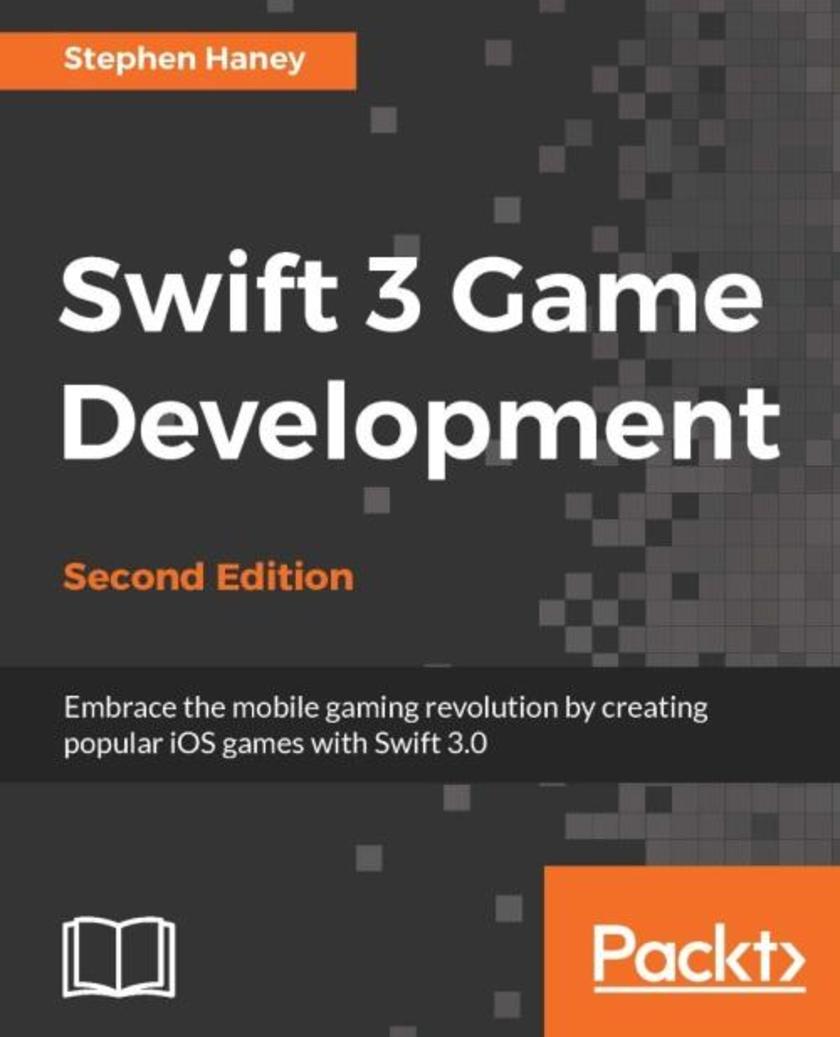
Swift 3 Game Development - Second Edition
¥71.93
Embrace the mobile gaming revolution by creating popular iOS games with Swift 3.0 About This Book Create and design games for iPhone and iPad using SpriteKit and Swift 3.0 Learn the core fundamentals of SpriteKit game development and mix and match techniques to customize your game This step-by-step practical guide will teach you to build games from scratch using little-known tips and strategies for maximum fun Who This Book Is For If you wish to create and publish fun iOS games using Swift, then this book is for you. You should be familiar with basic programming concepts. However, no prior game development or Apple ecosystem experience is required. What You Will Learn Deliver powerful graphics, physics, and sound in your game by using SpriteKit Set up the scene using the new capabilities of the scene editor and custom classes Maximize gameplay with little-known tips and strategies for fun and repeatable action Make use of animations, graphics, and particles to polish your game Understand the current mobile monetization landscape to choose the best option for your own situation Integrate your game with Game Center so that your players can share their high scores and achievements Publish your game to the App Store and enjoy people playing your games In Detail Swift is the perfect choice for game development. Developers are intrigued by Swift 3.0 and want to make use of new features to develop their best games yet. Packed with best practices and easy-to-use examples, this book leads you step by step through the development of your first Swift game. This book starts by introducing SpriteKit and Swift's new features that can be used for game development. After setting up your first Swift project, you will build your first custom class, learn how to draw and animate your game, and add physics simulations. Then, you will add the player character, NPCs, and powerups. To make your game more fun and engaging, you will learn how to set up scenes and backgrounds, build fun menus, and integrate with Apple Game Center to add leaderboards and achievements. You will then make your game stand out by adding animations when game objects collide, and incorporate proven techniques such as the advanced particle system and graphics. Finally, you will explore the various options available to start down the path towards monetization and publish your finished games to the App Store. By the end of this book, you will be able to create your own iOS games using Swift and SpriteKit. Style and approach This project-based guide is engaging with a visually-rich approach rather than a text-heavy approach. With every chapter containing practical examples, you will understand how Swift programming works and make the most of the new features in version 3.0.
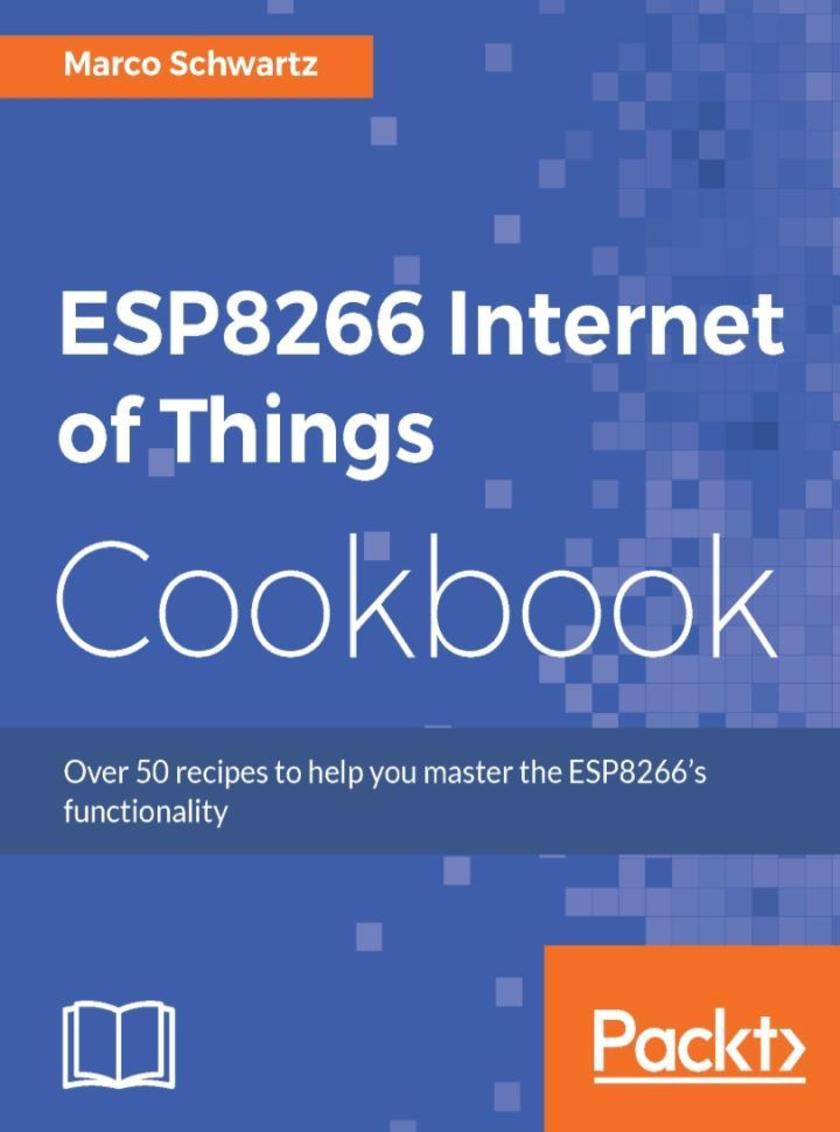
ESP8266 Internet of Things Cookbook
¥71.93
The ESP8266 Wi-Fi Module is a self contained System on Chip (SOC) with an integrated TCP/IP protocol stack and can give any microcontroller access to your Wi-fi network. It is capable of either hosting an application or offloading all Wi-fi networking functions from another application processor. This book contains practical recipes that will help you master all ESP8266 functionalities. You will start by configuring and customizing the chip in line with your requirements. Then you will focus on core topics such as on-board processing, sensors, GPIOs, programming, networking, integration with external components, and so on. We will also teach you how to leverage Arduino using the ESP8266 and you'll learn about its libraries, file system, OTA updates, and so on. The book also provide recipes on web servers, testing, connecting with the cloud, and troubleshooting techniques. Programming aspects include MicroPython and how to leverage it to get started with the ESP8266. Towards the end, we will use these concepts and create an interesting project (IOT). By the end of the book, readers will be proficient enough to use the ESP8266 board efficiently.
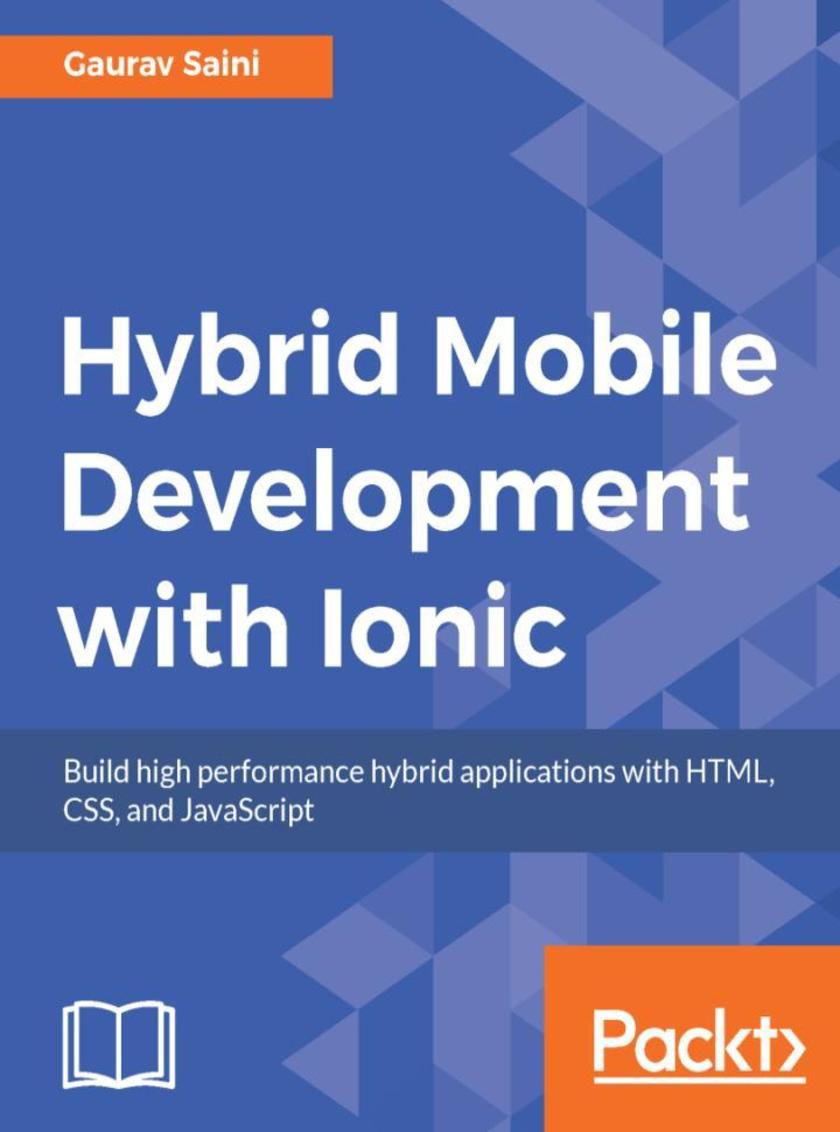
Hybrid Mobile Development with Ionic
¥71.93
Key Features ?Develop high-grade and performance-optimized hybrid applications using Ionic ?Discover all the latest and upcoming features of Ionic 2 ?A practical guide that will help you fully utilize all the features and components of Ionic 2 efficiently Book De*ion Ionic is an open source, front-end framework that allows you to develop hybrid mobile apps without any native-language hassle for each platform. It offers a library of mobile-optimized HTML, CSS, and JS components for building highly interactive mobile apps. This book will help readers develop a complete, professional-quality mobile application with Ionic Framework. You will start the journey by learning to configure and customize Ionic Framework. Then, you will move on to Ionic 2 components and see how you can customize them according to your applications. Also, you will implement various native plugins and integrate them with Ionic 2 along with Ionic Platform services to use them optimally in your application. You will also master authorization, authentication, and security techniques to ensure that your application and data are secure. Further, you will integrate backend services such as Firebase and the Cordova iBeacon plugin in your application. Lastly, you will test and troubleshoot your application. By the end of the book, you will not only have built a professional, hybrid mobile application but will also have ensured that your app is secure and performance-driven. What you will learn ?Use every Ionic component and customize it according to the application. ?Implement offline functionality in your application with various storage options such as localstorage and SQLite. ?Integrate the various Ionic backend services and features such as Ionic push and Ionic playground to send push notification and track events in your application. ?Explore white-listing, CORS, and various other platform security aspects to secure your application. ?Sync your data to the cloud server and fetch it in real time. ?Integrate the Cordova iBeacon plugin and fetch contextual data on the basis of location and iBeacon's UUID
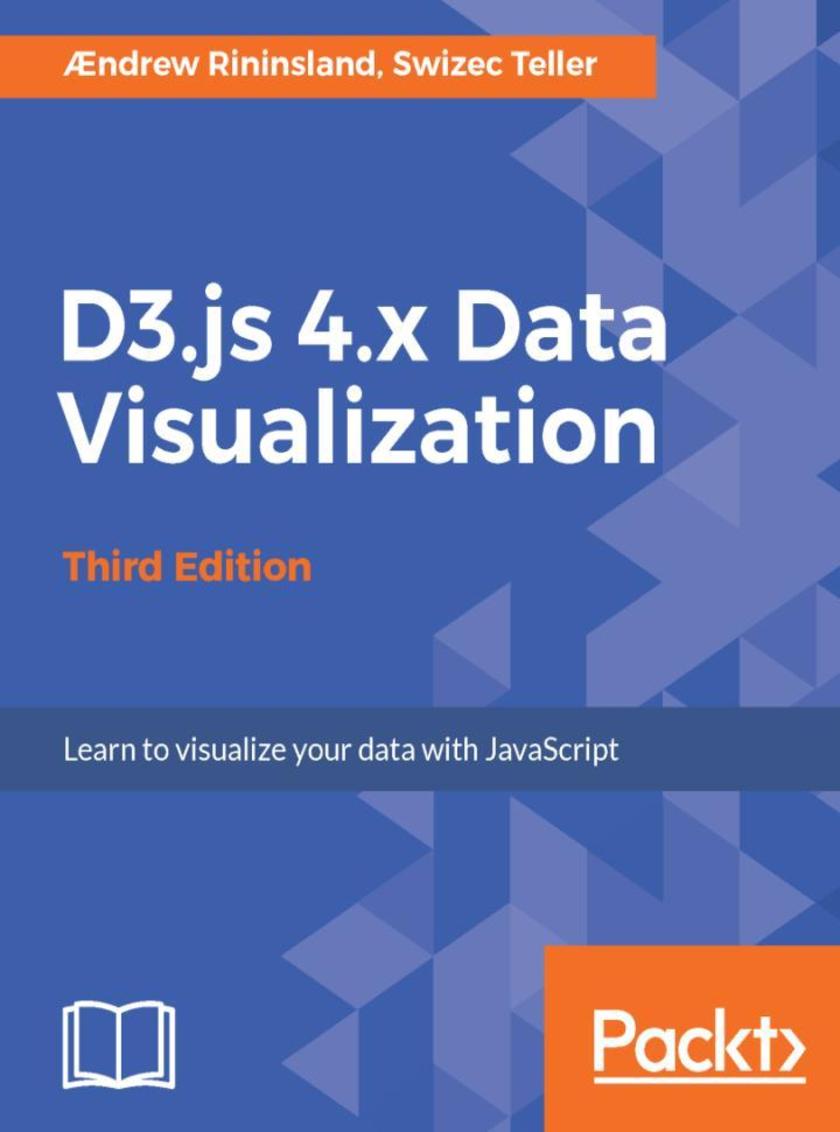
D3.js 4.x Data Visualization - Third Edition
¥71.93
Create and publish your own interactive and compelling data visualizations with D3.js 4.x About This Book ?Build interactive and rich graphics and visualization using JavaScript`s powerful library D3.js ?Learn D3 from the ground up, using the all-new version 4 of the library ?Gain insight into producing high-quality, extensible charts and visualizations using best practices such as writing testable, extensible code and strong typing Who This Book Is For This book is for web developers, interactive news developers, data scientists, and anyone interested in representing data through interactive visualizations on the Web with D3. Some basic knowledge of JavaScript is expected, but no prior experience with data visualization or D3 is required to follow this book. What You Will Learn ?Map data to visual elements using D3's scales ?Draw SVG elements using D3's shape generators ?Transform data using D3's collection methods ?Use D3's various layout patterns to quickly generate various common types of chart ?Write modern JavaScript using ES2017 and Babel ?Explore the basics of unit testing D3 visualizations using Mocha and Chai ?Write and deploy a simple Node.js web service to render charts via HTML Canvas ?Understand what makes a good data visualization and how to use the tools at your disposal to create accurate charts In Detail Want to get started with impressive interactive visualizations and implement them in your daily tasks? This book offers the perfect solution-D3.js. It has emerged as the most popular tool for data visualization.

The Node Craftsman Book
¥71.93
The Node Craftsman Book helps JavaScript programmers with basic Node.js knowledge to now thoroughly master Node.js and JavaScript. This book dives you deeper into the craft of software development with Node.js and JavaScript, incuding object-orientation, test-driven development, database handling, web frameworks, and much more. The Node Craftsman Book shows you how to work with Node.js and how to think deeply about how you build your Node projects. You'll master how to build a complete Node.js application across six crafting milestones, and you'll learn many specific skills to achieve that mastery. These skills include how to work with the Node Package Manager in depth, how to connect your Node applications to databases, and how to write unit tests and end-to-end tests for your code. You'll experience the full Node.js development picture, and learn how to craft and control your Node.js applications - right through to fully-fledged web applications using REST, and integration with Angular applications. What you will learn ?How to connect to databases like MongoDB and MySQL from your Node.js application ?How to unit tests and end-to-end tests for your code ?When and how to leverage migrations for setting up a continuous deployment workflow ?Detailed insight into how the Node Package Manager, NPM works ?How object-orientation actually works
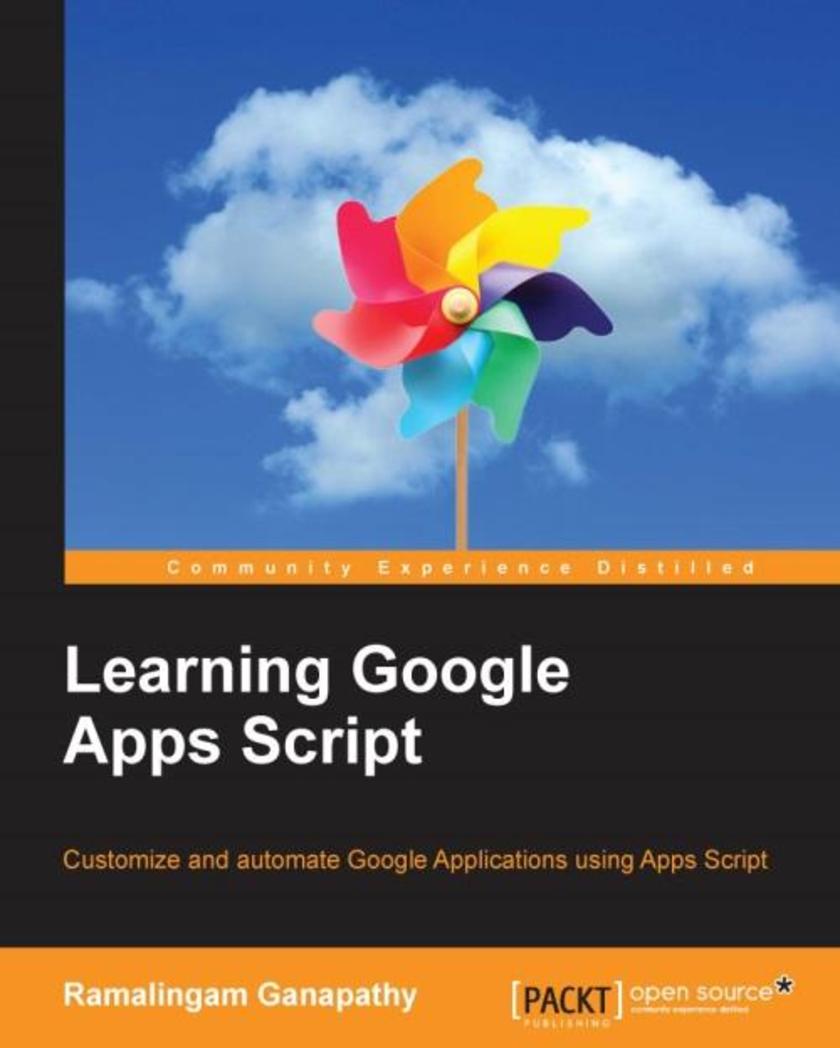
Learning Google Apps Script
¥71.93
Customize and automate Google Applications using Apps Script About This Book Gain insight into customizing and automating Google applications with JavaScript Create add-ons for Google Sheets, Docs, or Forms; automate your workflow; integrate with external APIs; and more. A step-by-step guide to building real-world solutions Who This Book Is For Newbies to google apps * but having practical experience in Java*. What You Will Learn Learn about the Google Apps * platform and work with *s to develop Google apps Create custom menus and dialogs Parse and send emails Generate Google calendar events Build Translator and RSS reader applications Develop interactive web pages Design interactive web-forms Form a workflow application In Detail Google Apps Script is a cloud-based *ing language based on JavaScript to customize and automate Google applications. Apps Script makes it easy to create and publish add-ons in an online store for Google Sheets, Docs, and Forms. It serves as one single platform to build, code, and ultimately share your App on the Web store. This book begins by covering the basics of the Google application platform and goes on to empower you to automate most of the Google applications. You will learn the concepts of creating a menu, sending mails, building interactive web pages, and implementing all these techniques to develop an interactive Web page as a form to submit sheets You will be guided through all these tasks with plenty of screenshots and code snippets that will ensure your success in customizing and automating various Google applications This guide is an invaluable tutorial for beginners who intend to develop the skills to automate and customize Google applications Style and approach An easy-to-follow yet comprehensive guide, filled with many code examples and screenshots illustrating various Google Apps *s.
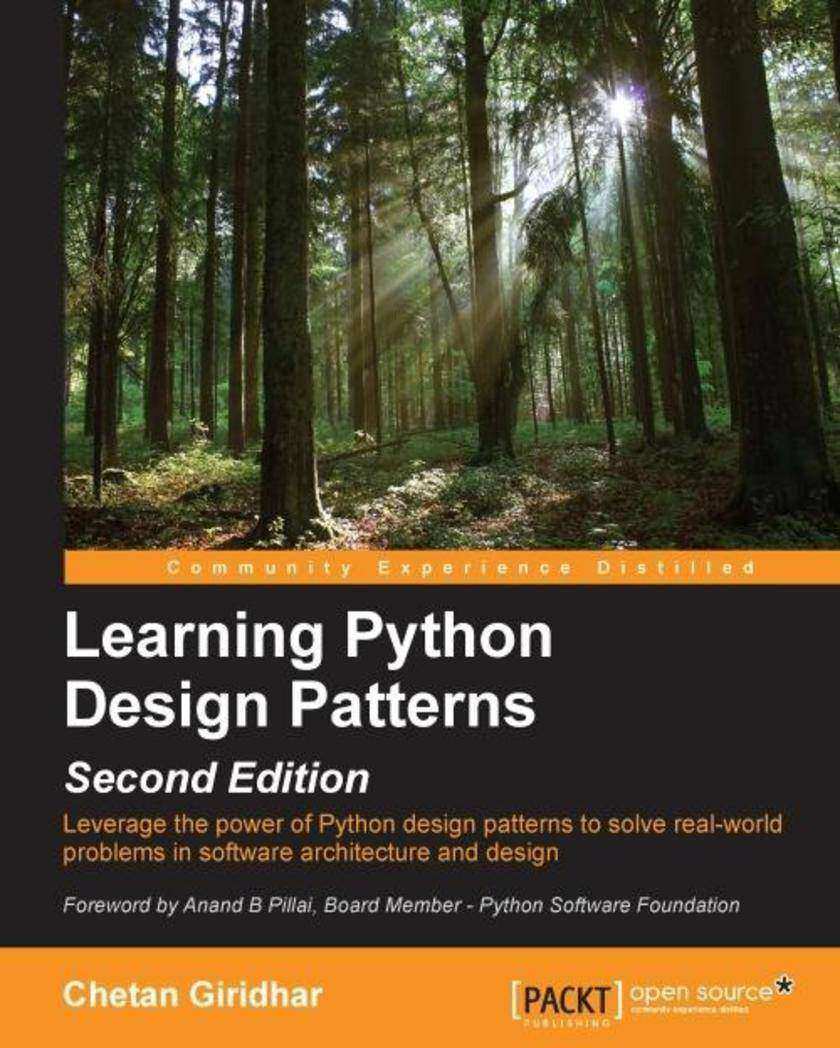
Learning Python Design Patterns - Second Edition
¥71.93
Leverage the power of Python design patterns to solve real-world problems in software architecture and designAbout This BookUnderstand the structural, creational, and behavioral Python design patternsGet to know the context and application of design patterns to solve real-world problems in software architecture, design, and application developmentGet practical exposure through sample implementations in Python v3.5 for the design patterns featuredWho This Book Is ForThis book is for Software architects and Python application developers who are passionate about software design. It will be very useful to engineers with beginner level proficiency in Python and who love to work with Python 3.5What You Will LearnEnhance your skills to create better software architectureUnderstand proven solutions to commonly occurring design issuesExplore the design principles that form the basis of software design, such as loose coupling, the Hollywood principle and the Open Close principle among othersDelve into the object-oriented programming concepts and find out how they are used in software applicationsDevelop an understanding of Creational Design Patterns and the different object creation methods that help you solve issues in software developmentUse Structural Design Patterns and find out how objects and classes interact to build larger applicationsFocus on the interaction between objects with the command and observer patternsImprove the productivity and code base of your application using Python design patternsIn DetailWith the increasing focus on optimized software architecture and design it is important that software architects think about optimizations in object creation, code structure, and interaction between objects at the architecture or design level. This makes sure that the cost of software maintenance is low and code can be easily reused or is adaptable to change. The key to this is reusability and low maintenance in design patterns.Building on the success of the previous edition, Learning Python Design Patterns, Second Edition will help you implement real-world scenarios with Python’s latest release, Python v3.5.We start by introducing design patterns from the Python perspective. As you progress through the book, you will learn about Singleton patterns, Factory patterns, and Fa?ade patterns in detail. After this, we’ll look at how to control object access with proxy patterns. It also covers observer patterns, command patterns, and compound patterns.By the end of the book, you will have enhanced your professional abilities in software architecture, design, and development.Style and approachThis is an easy-to-follow guide to design patterns with hands-on examples of real-world scenarios and their implementation in Python v3.5. Each topic is explained and placed in context, and for the more inquisitive, there are more details on the concepts used.

Working with Linux – Quick Hacks for the Command Line
¥71.93
Say goodbye to unproductive Linux habits and switch to the express lane About This Book ? Improve your terminal and command-line productivity by using powerful tools ? Sharpen your existing command-line skills and achieve complex tasks faster ? Save time and money by creating customized commands that automate day-to-day tasks Who This Book Is For This book is for system administrators and developers who know the basics of Linux and want to brush up and sharpen their skills. Prior experience with Linux shell is required. What You Will Learn ? Optimize the power of Guake by integrating it with ClipIt ? Deep dive into the workings of the console editor—Vim ? Explore the advanced concepts and best practices of shell *ing ? Edit large amounts of data quickly using Sed ? Use pipes and subshells to create customized commands ? Get to know how you can speed up the software development and make the terminal a handy companion In Detail Websites, online services, databases, and pretty much every other computer that offers public services runs on Linux. From small servers to clusters, Linux is anywhere and everywhere. With such a broad usage, the demand for Linux specialists is ever growing. For the engineers out there, this means being able to develop, interconnect, and maintain Linux environments. This book will help you increase your terminal productivity by using Terminator, Guake and other tools. It will start by installing Ubuntu and will explore tools and techniques that will help you to achieve more work with less effort. Next, it will then focus on Terminator, the ultimate terminal, and vim, one of the most intelligent console editors. Futhermore, the readers will see how they can increase their command line productivity by using sed, find, tmux, network, autoenv. The readers will also see how they can edit files without leaving the terminal and use the screen space efficiently and copy-paste like a pro. Towards the end, we focus on network settings, Git hacks, and creating portable environments for development and production using Docker. Through this book, you will improve your terminal productivity by seeing how to use different tools. Style and Approach This book takes a step-by-step approach using examples that show you how to automate tasks using terminal commands. You’ll work through easy-to-follow instructions so you learn to use the various Linux commands and tools such as Terminator, Guake, and others.
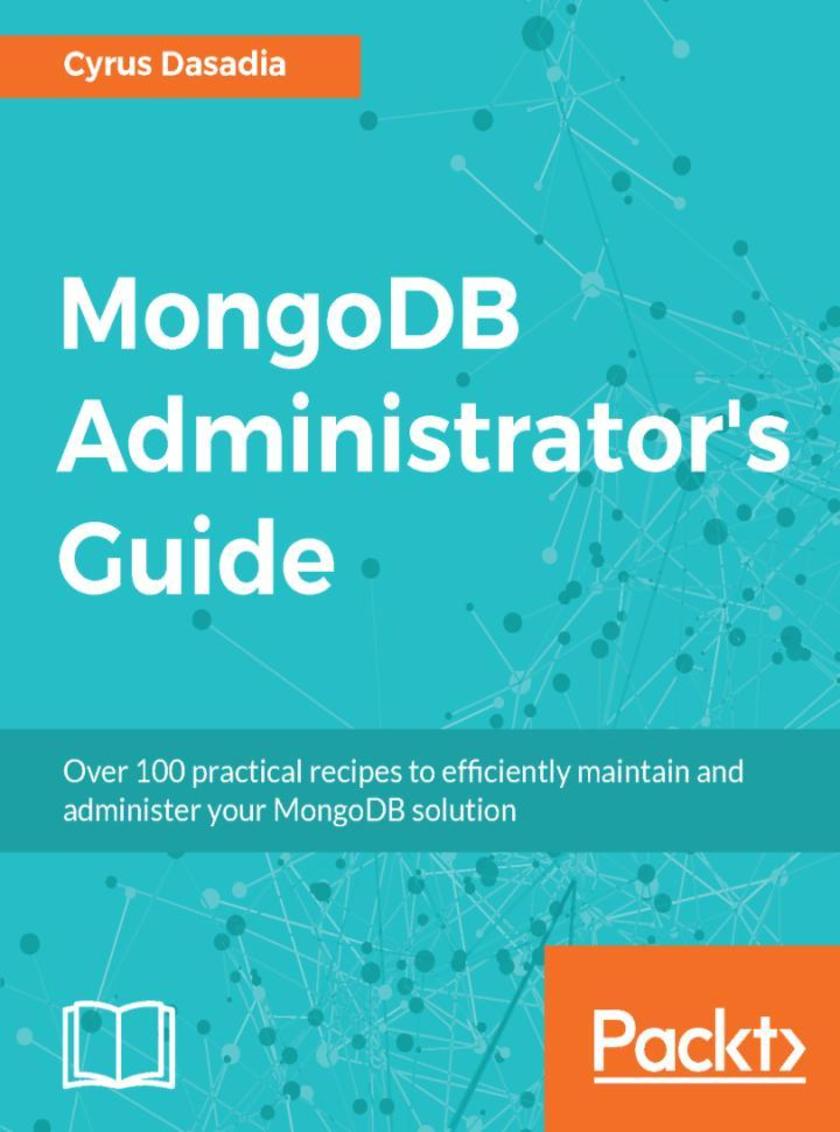
MongoDB Administrator’s Guide
¥71.93
Manage, fine-tune, secure and deploy your MongoDB solution with ease with the help of practical recipes About This Book ? Configure and deploy your MongoDB instance securely, without any hassle ? Optimize your database's query performance, perform scale-out operations, and make your database highly available ? Practical guide with a recipe-based approach to help you tackle any problem in the application and database administration aspects of MongoDB Who This Book Is For Database administrators with a basic understanding of the features of MongoDB and who want to professionally configure, deploy, and administer a MongoDB database, will find this book essential. If you are a MongoDB developer and want to get into MongoDB administration, this book will also help you. What You Will Learn ? Install and deploy MongoDB in production ? Manage and implement optimal indexes ? Optimize monitoring in MongoDB ? Fine-tune the performance of your queries ? Debug and diagnose your database's performance ? Optimize database backups and recovery and ensure high availability ? Make your MongoDB instance scalable ? Implement security and user authentication features in MongoDB ? Master optimal cloud deployment strategies In Detail MongoDB is a high-performance and feature-rich NoSQL database that forms the backbone of the systems that power many different organizations. Packed with many features that have become essential for many different types of software professional and incredibly easy to use, this cookbook contains more than 100 recipes to address the everyday challenges of working with MongoDB. Starting with database configuration, you will understand the indexing aspects of MongoDB. The book also includes practical recipes on how you can optimize your database query performance, perform diagnostics, and query debugging. You will also learn how to implement the core administration tasks required for high-availability and scalability, achieved through replica sets and sharding, respectively. You will also implement server security concepts such as authentication, user management, role-based access models, and TLS configuration. You will also learn how to back up and recover your database efficiently and monitor server performance. By the end of this book, you will have all the information you need—along with tips, tricks, and best practices—to implement a high-performance MongoDB solution. Style and approach This practical book follows a problem-solution approach to help you tackle any issues encountered while performing MongoDB administrative tasks. Each recipe is detailed, and explained in a very easy to understand manner




 购物车
购物车 个人中心
个人中心



